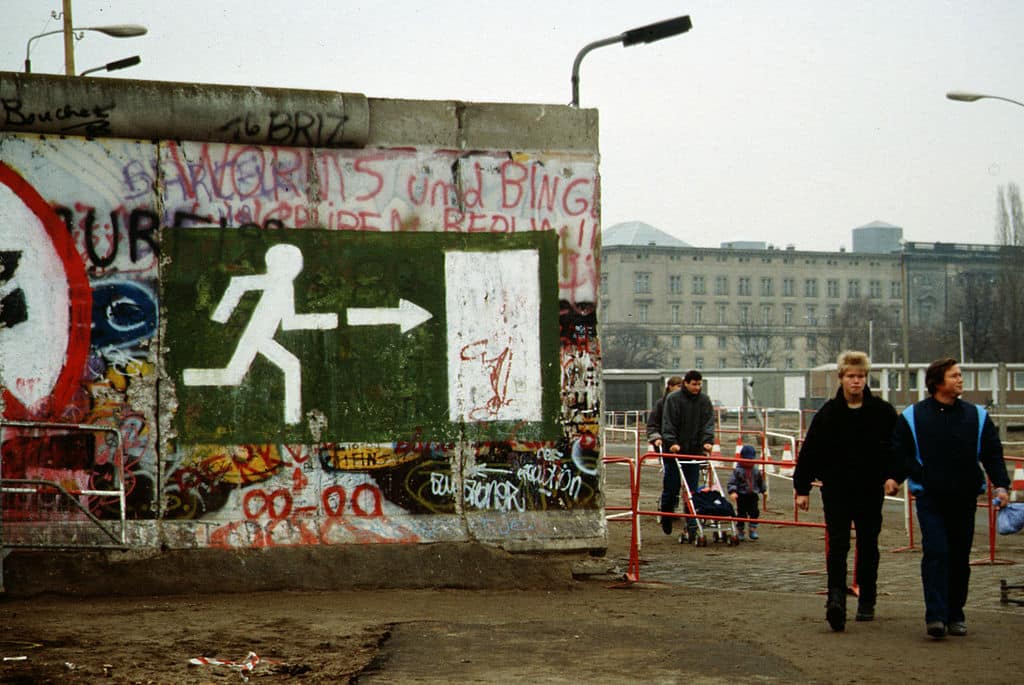Thirty years ago, the fall of the Berlin Wall seemed to mark the victory of capitalism and democracy in the Cold War. The George H.W. Bush Administration proclaimed a “Europe whole and free” and a new international order, and some foreign policy specialists looked forward to an era of U.S. hegemony. In the succeeding three decades, however, it has turned out that both sides lost.
The year 1989 brought to a close a century of strong governments, massive spending on public goods, decreasing inequality and political engagement. The fall of Communism allowed the West—and particularly its leader, the United States—to go in any direction that it wanted. The direction it chose, however, unleashed powerful economic forces that had been kept in check since the Great Depression, thus weakening political structures. Today, to a degree that would surprise anyone in 1989, we might be forgiven for missing the Cold War.
In 1942, at the height of the Second World War, Vice President Henry Wallace declared the 20th century “the century of the common man.” The war pitted the United States and its allies, who wanted freedom and economic security for ordinary people, against the Nazis and their allies, who would reduce them to slavery. The wartime alliance between the U.S. and the USSR obscured the enormous differences between them, and both claimed to be fighting for democracy. In the postwar period they quickly came into conflict in both Europe and Asia, and both Moscow and Washington cast themselves as the model for the rest of the world, and the hope of the masses.
As the Cold War began, while the Soviets imposed Communism in the nations their armies occupied, the Western Europeans adopted the principles of the American New Deal and built welfare states with strong labor movements. They saw that meeting the needs of the working class could insure against the growth of any new totalitarian movements. And in the rest of the world, both the U.S. and the USSR encouraged decolonization and argued that newly independent states should adopt their model. Any new nation could secure material and political assistance simply by allying itself with one side or the other.
The American political consensus around the Cold War broke down in the late 1960s, and a great deal of attention focused on its negative aspects for the next two decades. Its anti-Communism led to McCarthyism, destroying the careers of many innocent people in various walks of life, and it created a huge permanent military establishment. Both sides built terrifying nuclear forces. U.S. intelligence agencies helped overthrow elected governments in Iran, Guatemala, Brazil and Chile, and plotted the assassination of several foreign leaders. That, however, was only part of the story.
The worldwide political and military competition with the Soviet Union had all sorts of beneficial effects on the United States. From 1950 through 1973, the military draft drew many millions of young men into the armed forces, where they learned basic skills, secured some long-term benefits and worked with men from every part of the country and every ethnic group. Congress funded both the Interstate Highway System and the National Defense Education Act to strengthen the country in the Cold War. Americans measured the strength of their economy and its growth rates against the supposed achievements of the USSR, whose official growth rates were higher than those of the U.S. well into the 1960s. The space program, with all its technological and political benefits, also arose out of the competition with Moscow. The 90% top marginal tax rates that had financed the Second World War effort remained in place until 1964 to pay for all this. The nation also treated its trade balance as a national security issue.
While the continuing nuclear competition between the U.S. and the USSR brought the world to the brink of catastrophe at least once, in October 1962, it did not prevent the two states from working together for the common good. The nuclear Test Ban Treaty of 1963 and the Non-proliferation Treaty of 1969 tried to keep the nuclear genie in the bottle, and in the latter treaty, Moscow and Washington actually committed themselves to abandon their own nuclear weapons in exchange for the promise of other nations not to acquire them. Other arms control agreements followed in 1972, and in 1975, at Helsinki, the two nations and their allies agreed not to attempt to change the borders of European states by force.
BY DAVID KAISER , NOVEMBER 7, 2019, TIME. Read the full article
Fall of the Berlin Wall 1989, people walking, Wikimedia Commons
Redazione
La redazione di Babilon è composta da giovani giornalisti, analisti e ricercatori attenti alle dinamiche mondiali. Il nostro obiettivo è rendere più comprensibile la geopolitica a tutti i tipi di lettori.
Dall’origine straniera all’icona americana: il fenomeno dello sport negli Usa
14 Mar 2024
Molti sport americani sono accomunati da un aspetto particolarmente curioso: raramente sono davvero nati sul suolo…
Roulette europea, francese o americana? Ecco un approfondimento
22 Set 2023
La roulette è un classico intramontabile dei casinò, amata da milioni di appassionati in tutto il mondo. Una delle…
Conto corrente online: perché è la soluzione migliore per i più giovani
21 Ott 2022
I millennial e i nativi digitali hanno dimostrato di essere una forza in grado di cambiare le carte in tavola nel…
L’intrattenimento online è dei casinò
31 Ago 2022
Il mondo dell’intrattenimento è vasto e ricco di opzioni. Con l’avvento di internet, poi, il settore non fatto altro…




